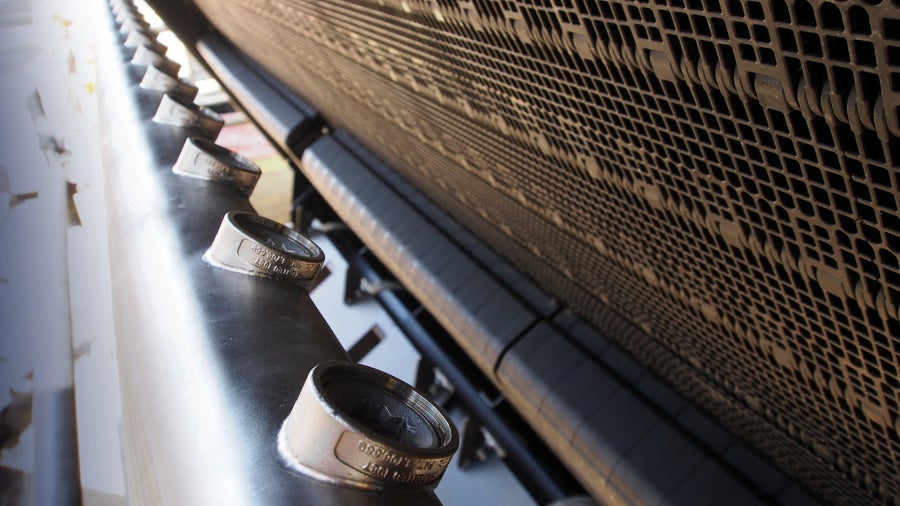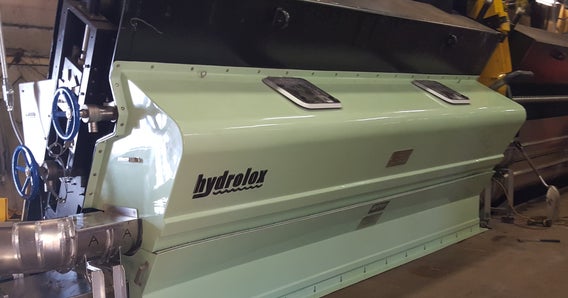Hydrolox Screens Help Power Station Save More Than $200,000 Annually
Case StudyPower Station
Location
Alabama, USA
Industry
Fossil Power
Solution
Debris Removal

Customer Objectives
A six-unit coal and natural gas plant with a nameplate capacity of 2370 megawatts on the Mobile River had been experiencing recurring issues with the water screens along its east intake. The high amount of debris on that stretch of the river damaged the screens significantly; as a result, they had to be rebuilt every 3–4 years. And because the screens had to be run intermittently (not continuously), the actual runtime between rebuilds was only two years.
Preventive maintenance, which had to be performed frequently, required several plant workers scheduled for multiple hours at a time. Plant officials were also concerned about Section 316(b) of the Clean Water Act, which outlined the Environmental Protection Agency’s (EPA) pending regulations for fish impingement and entrainment.
Hydrolox Execution
Looking to reduce maintenance and repairs while planning for the future, the power plant decided to replace its aging screens with a new debris- and fish-handling solution. The company wanted its new screens to operate 24/7, and sought to avoid the unplanned maintenance and repair work often found with traditional steel screen systems. Any new solution would also need to enable future compliance with Section 316(b).
We have had great success with the overall durability and maintenance of the screens. The Hydrolox screens have only required minimal preventive maintenance, which has allowed us to operate more efficiently, and has lowered O&M costs for this equipment.
Senior Maintenance Specialist
Power Station
The power plant chose to install five Hydrolox Series 6000 Flush Grid traveling water screens along its east intake. The plant had previously installed a Hydrolox screen along its west intake five years earlier. Plant officials were pleased with the screen’s performance, as it effectively handled the river’s high debris loads and required minimal unplanned maintenance. The new screens were equipped with Ristroph-style fish buckets and a return system that ensured 316(b) compliance by smoothly and efficiently collecting fish and returning them to the waterway.
Results
Since being installed more than six years ago, the Hydrolox screens have delivered dramatic improvements over the power plant’s previous system. Operating 24/7, they have ensured optimal results and 316(b) compliance, and have led to unplanned maintenance on only one occasion. The plant’s cost savings have been significant. The amount of time annually devoted to maintenance has decreased from 682 work hours to just 72. This 89% reduction has translated into cost savings of approximately $24,000 per screen per year. Factoring in the cost of the old system’s frequent screen rebuilds, the plant estimates savings of more than $200,000 per year.
The power plant’s senior maintenance specialist has high hopes for the screens moving forward. “Outside of weekly lubrication and inspection,” he says, “I estimate the Hydrolox screens will require one full day of maintenance per screen every two years—along with an annual in-service visual inspection—to maintain the current operation cycle.” He also has strong praise for the responsiveness of the Hydrolox team: “We have had great success with the overall durability and maintenance of the screens. The Hydrolox screens have only required minimal preventive maintenance, which has allowed us to operate more efficiently, and has lowered O&M costs for this equipment. Since I have taken over this system, their field service technicians have been more than helpful in maintaining and supporting our preventative maintenance program on this equipment.”
Putting Our Screens to the Test
In May 2013, this power plant collaborated with several members of the Electric Power Research Institute (EPRI) on a study to evaluate the effectiveness of Hydrolox traveling water screens as a potential option to meet the fish protection requirements of Section 316(b) of the Clean Water Act. The testing, which lasted one year, showed that Hydrolox screens effectively routed most fish and debris into the fish return system.
For more information about the EPRI’s report, Hydrolox Traveling Water Screen Fish Impingement and Survival Case Study, visit EPRI.com.


